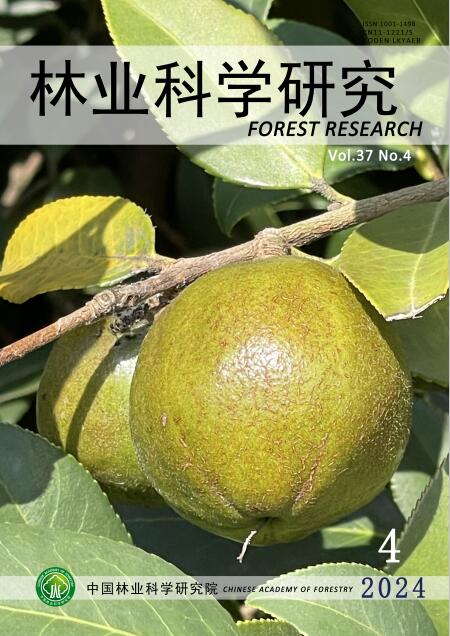Responses of a Sierran Mixed Conifer Understory Plant Community toOver Story Thinning, Slash Mastication, and Prescribed Fire RestorationTreatments
Q4 Agricultural and Biological Sciences
引用次数: 1
Abstract
Thinning implemented with a cut-to-length harvesting system coupled with on-site slash mastication and redistribution and followed by prescribed under burning were assessed for their impacts on the shrub understory and natural regeneration in an uneven-aged Sierra Nevada mixed conifer stand. Initial suppression of the cover and weight of huckleberry oak, the most prevalent ground cover species, by the combined thinning and mastication operations and those of prostrate ceanothus by the under burn were followed by a pronounced resurgence in abundance for both species in burned stand portions, particularly where thinning had preceded the fire. White fir was most prevalent initially among species represented in the seedling size class of natural regeneration and became predominant thereafter while this species dominated the sapling class throughout the study. White fir seedling establishment was enhanced where the mechanized operations were excluded, and especially so where fire was as well, and such was also the case for incense-cedar initially but its seedling abundance declined precipitously as the study progressed. White fir saplings were most numerous in the unthinned stand subunit but the under burn proved lethal to many of them therein. Jeffrey and sugar pine were little represented among seedlings and absent altogether among saplings.高山混交针叶林下植物群落对层间伐、砍伐和规定火灾恢复处理的响应
在内华达山脉一个年龄不均匀的混合针叶林中,采用切至长度的采伐系统进行间伐,再配以现场砍伐和再分配,然后进行规定的燃烧,评估了它们对灌木下层植被和自然更新的影响。越橘栎(最常见的地被植物)的覆盖度和重量最初受到疏伐和咀嚼联合行动的抑制,而匍匐的海杉则受到欠烧的抑制,随后在被烧的林分部分,特别是在火灾发生前已经疏伐的地方,这两种物种的丰度都明显恢复。白冷杉在自然更新的幼苗级中最常见,随后逐渐成为优势种,而在整个研究过程中,白冷杉在幼树级中占主导地位。在没有机械化操作的情况下,特别是在有火的情况下,白杉幼苗的建立得到了加强,香杉树最初也是如此,但随着研究的深入,其幼苗丰度急剧下降。在未砍伐林分亚单位中,白杉树苗数量最多,但其中的许多树苗因欠烧而死亡。白桦和糖松在树苗中几乎没有出现,在树苗中完全没有出现。
本文章由计算机程序翻译,如有差异,请以英文原文为准。
求助全文
约1分钟内获得全文
求助全文
来源期刊

林业科学研究
Environmental Science-Ecology
CiteScore
0.90
自引率
0.00%
发文量
4834
期刊介绍:
Forestry Research is a comprehensive academic journal of forestry science organized by the Chinese Academy of Forestry. The main task is to reflect the latest research results, academic papers and research reports, scientific and technological developments and information on forestry science mainly organized by the Chinese Academy of Forestry, to promote academic exchanges at home and abroad, to carry out academic discussions, to flourish forestry science, and to better serve China's forestry construction.
The main contents are: forest seeds, seedling afforestation, forest plants, forest genetic breeding, tree physiology and biochemistry, forest insects, resource insects, forest pathology, forest microorganisms, forest birds and animals, forest soil, forest ecology, forest management, forest manager, forestry remote sensing, forestry biotechnology and other new technologies, new methods, and to increase the development strategy of forestry, the trend of development of disciplines, technology policies and strategies, etc., and to increase the forestry development strategy, the trend of development of disciplines, technology policies and strategies. It is suitable for scientists and technicians of forestry and related disciplines, teachers and students of colleges and universities, leaders and managers, and grassroots forestry workers.
 求助内容:
求助内容: 应助结果提醒方式:
应助结果提醒方式:


